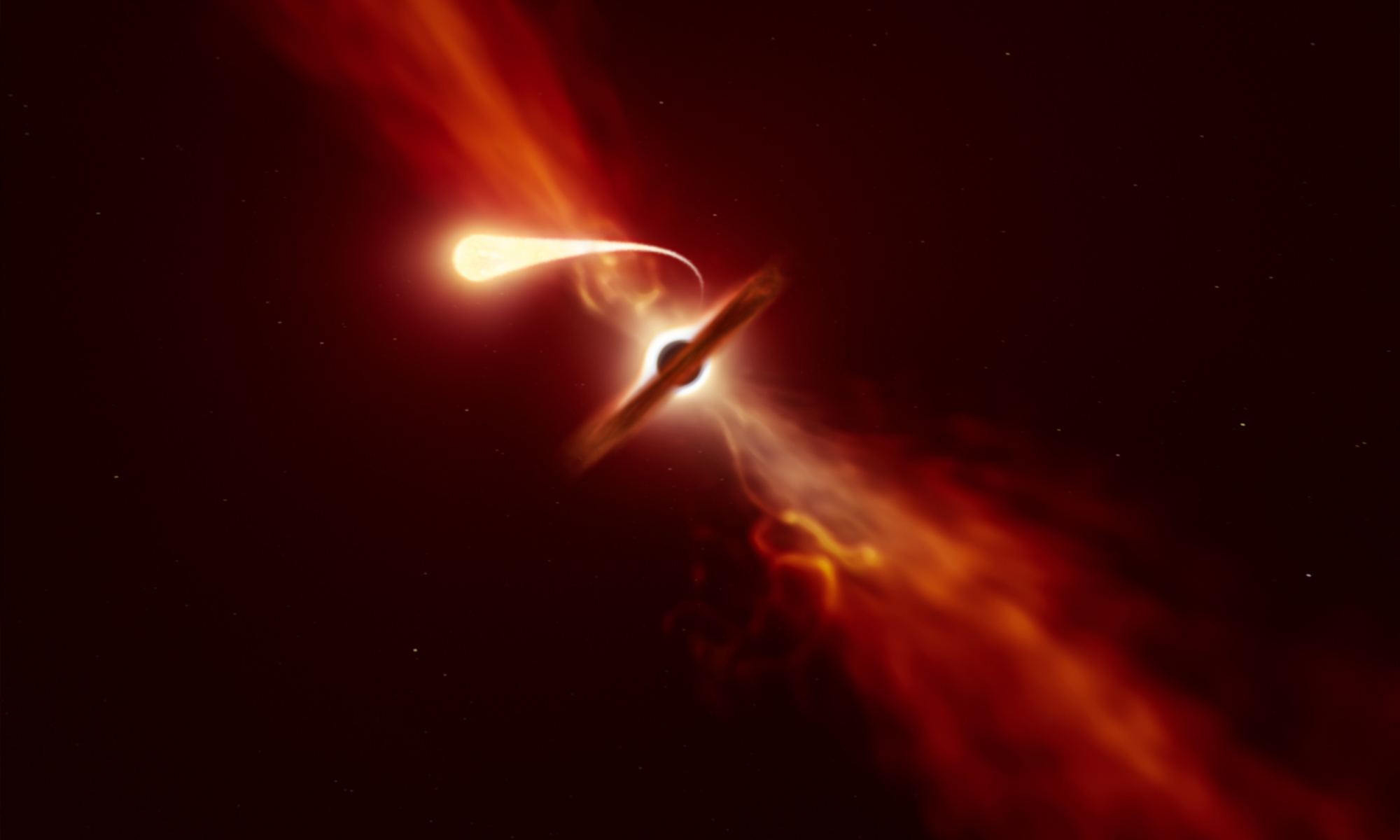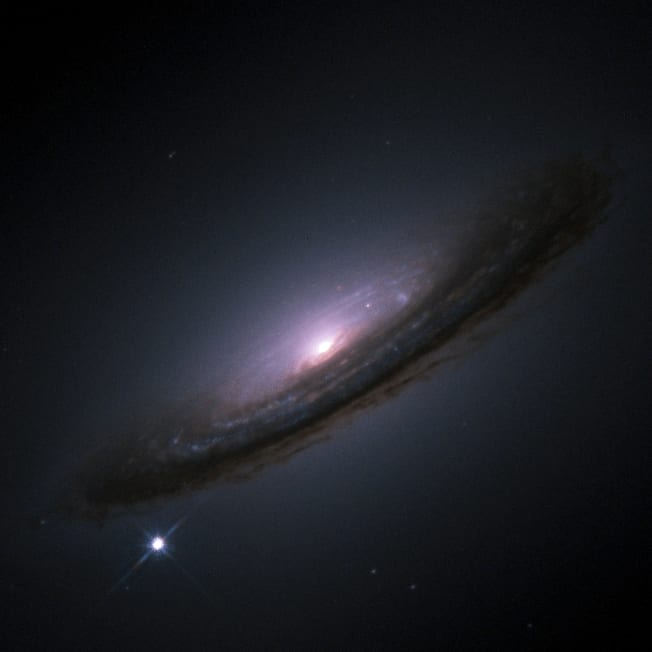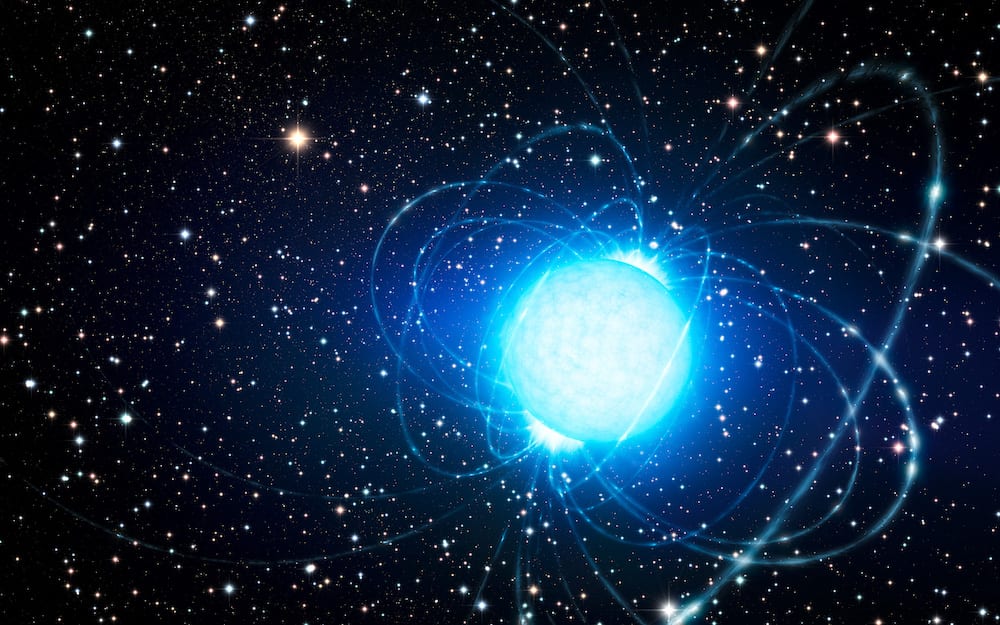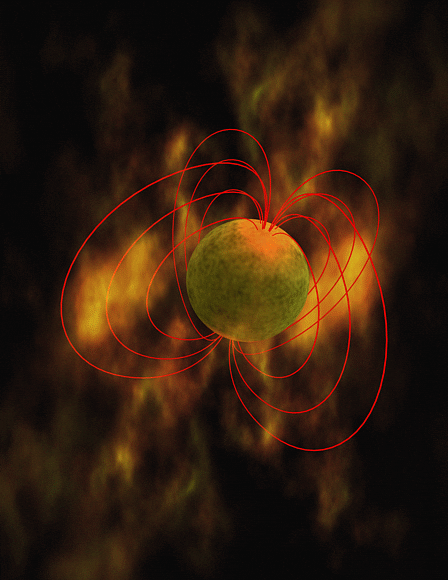In moments of uncertainty—heartbreaks, health scares, career limbo—we often look for something, anything, that might offer a sliver of guidance. A little cosmic reassurance. Enter horoscopes. With one hand clutching a coffee and the other nervously scrolling through our daily forecast, we ask the stars for answers we already suspect, hoping they’ll just…confirm things. Logic … Continue reading 10 Crazy Astrology Facts: From Hitler’s Horoscope to Tree Marriages
“Spaghettification” is a legit Astronomy…
“Spaghettification” is a legit Astronomy term that explains what happens when a person falls into a black hole.
The post “Spaghettification” is a legit Astronomy… appeared first on Crazy Facts.
What American businessman and…
What American businessman and astronomer Percival Lowell mistakenly thought were “spokes” on the surface of Venus were actually shadows of the blood vessels in his eyes cast on his retina, his telescope essentially functioning as a giant ophthalmoscope.
The post What American businessman and… appeared first on Crazy Facts.
Scientists Say There Could Be 36 Alien Civilizations in the Milky Way
We’ve all wondered–could there be, not just life, but intelligent life, out there?
And while relative intelligence of life on Earth could be debatable, two scientists from the University of Nottingham have a new theory that suggests there is.
36 different potential civilizations, to be exact.
![]()
Image credit: NASA via Rawpixel
How can scientists possibly make a prediction about the number of undiscovered civilizations?
It’s a mathematical theory based on a fifty-year-old equation called the Drake equation.
As Popular Mechanics explains:
Drake’s seven key variables, which range from how many habitable planets exoplanets there are in the galaxy to the amount of time over which intelligent life takes shape, are almost impossible to pin down.
The formula acts more like a framework for the probability of finding life; previous estimates have ranged from zero to over a billion civilizations.
But Professor of Astrophysics Christopher Conselice, his colleague Tom Westby, and their team at the University of Nottingham used new technology and assumptions about our galaxy, the Milky Way, to formulate a new hypothesis.
They published their work last summer in The Astrophysical Journal.
![]()
Image credit: NASA via Rawpixel
As quoted in Phys.org, Conselice explains that they based their assumption on the length of time it took a civilization to develop on Earth:
“There should be at least a few dozen active civilizations in our Galaxy under the assumption that it takes 5 billion years for intelligent life to form on other planets, as on Earth.
The idea is looking at evolution, but on a cosmic scale. We call this calculation the Astrobiological Copernican Limit.”
The Copernican limit guides researchers to think on a pretty large scale–where intelligent life develops in either more or less than 5 billion years.
By intelligent life, scientists mean a civilization capable of communication.
On Earth, that development took more than 4.5 billion years, thus the 5 billion year threshold.
![]()
Image credit: NASA via Rawpixel
These calculations have been used for years, but the Nottingham team took it one step further, factoring in the specific composition of Earth’s sun.
As Westby explained:
“In the strong criteria, whereby a metal content equal to that of the Sun is needed (the Sun is relatively speaking quite metal rich), we calculate that there should be around 36 active civilizations in our Galaxy.”
When all of the data is combined and analyzed, they believe just 36 exoplanets possess all the right conditions to support the development of an alien civilization.
Of course that means 36 alien civilizations that are enough like us to be recognizable as communicative beings.
Who knows how many are out there that are so different that we might not even recognize them if we saw them.
The problem is, a theory needs to be proven, and the exoplanets are so far away that while we can see them with high powered telescopes and gather some sensory data on them, we don’t yet have the technology to visit them–even with probes.
![]()
Image credit: NASA via Rawpixel
If they’re so far away, why do we even care?
Well aside from the intrinsic human need to explore and discover, finding out how many other civilizations co-exist could actually tell us something about how long life on earth will last.
As Professor Conselice points out:
If we find that intelligent life is common then this would reveal that our civilization could exist for much longer than a few hundred years, alternatively if we find that there are no active civilizations in our Galaxy it is a bad sign for our own long-term existence.
By searching for extraterrestrial intelligent life—even if we find nothing—we are discovering our own future and fate
This is very exciting in the world of astronomy.
But according to Popular Mechanics and The Guardian, not every scientist is convinced.
Oliver Shorttle of the University of Cambridge told the news organization that more factors need to be considered—such as how exactly life formed on Earth—before taking the new findings as fact.
That’s science for you. There’s always more to consider.
Even so, it’s pretty cool to have such a specific number, don’t you think?
Do you believe there’s life out there? Let us know your theories in the comments!
The post Scientists Say There Could Be 36 Alien Civilizations in the Milky Way appeared first on UberFacts.
By tradition astronomers name lunar…
By tradition astronomers name lunar lava planes after states of mind, such as “Sea of Tranquility”. However when Soviets discovered a new mare, they named it Moscoviense, after Moscow. This caused strife among astronomers, until it was agreed that Moscow is, in fact, a state of mind.
The post By tradition astronomers name lunar… appeared first on Crazy Facts.
An Astronaut Posted Pictures of Earth and Flat-Earthers Complained
The Earth is round – we’ve known this for many hundreds of years. It wasn’t particularly controversial for much of that time, but for some reason there has recently sprung up a small contingent of people that insists, incorrectly, that the world is flat.
Jessica Mier is a NASA astronaut who witnessed the beauty of looking at Earth from a distance. She shared a few photos online with the world so the rest of us could appreciate our home.
The first orientation may make more sense to you, but to me this is the ever-changing skyline on @Space_Station (photo 3). Perspective. The constant traffic of visiting vehicles makes for diverse vistas. Now the #Canadarm2 keeps #Cygnus company after @SpaceX #Dragon’s departure. pic.twitter.com/jfLMcDaf8R
— Jessica Meir (@Astro_Jessica) January 10, 2020
There are always people who want to diminish something beautiful and positive. After Mier uploaded these photos, flat-earthers showed their disdain.
Why do you guys always use fish eye lenses
— Irah Chandler (@irah_chandler) January 10, 2020
Several people accused NASA (and Mier) of using a fisheye lens to take photos of our “flat” Earth. You’re probably familiar with this, but a fisheye lens can make objects look more curved and wider. This effect can make flat objects look more spherical.
Yes. That's fish eye lens. Make earth looks like round. Actually, the earth is Flat!
— Santai Saja (@Sakadaekk) January 10, 2020
Leave the fish eye camera now, see the facts.
— EskiTeksas (@gokseller) January 15, 2020
Others quickly shut down these flat earth theories.
Can someone please sponsor a mission to fly all these flat-earthers to space so they can all shut up once and for all? Actually, that would be a huge waste because they still wouldn’t be convinced.
— Alex (@_wantobefree) January 13, 2020
Beautiful pictures. However the #FlatEarth idiots will stick their fingers in their ears and go "blah blah blah" as usual
— ʀɪᴛᴄʜ (@RitchTeaBisquit) January 13, 2020
Well, at least some of these good people tried to knock some sense into flat-earthers.
Mier currently resides in the International Space Station and is an accomplished physiologist from Texas. It’s clear that she loves her job, and she frequently posts about what she sees from space, the history of astronomy, and her workplace adventures.
Without the actions and sacrifices of those that came before us, humankind would never have set eyes on our Earth from above. The fallen heroes of Apollo 1, Challenger, and Columbia are present in all that we do. #NASARemembers #NASADayofRemembrance pic.twitter.com/BfPtB1peli
— Jessica Meir (@Astro_Jessica) January 30, 2020
She even delivers lectures from space!
I’m thrilled to be speaking with San Diego area students gathered at my alma mater @ucsandiego @Scripps_Ocean about #TheJourney for me as I went from #STEMtoStars. Tune in and watch today at 11:35 am PST: https://t.co/0TCX0P9mJJ pic.twitter.com/1VOUQoEMuW
— Jessica Meir (@Astro_Jessica) January 27, 2020
Regardless of what a few flat-earthers might say, Mier is clearly going to continue killing it at NASA.
What did you think of these pictures and the flat-earthers’ responses? If you have anything to say about these photographs or the flat-earthers who might try to discredit them, know what we’ll totally respect your comments…
The post An Astronaut Posted Pictures of Earth and Flat-Earthers Complained appeared first on UberFacts.
Stars Are Disappearing and Scientists Aren’t Ruling out Aliens as a Cause
There have been a few stories lately when scientists and other suit-and-tie types have been unwilling to say aliens aren’t behind one thing or another – which I guess is the safest course, because no one likes to be proven wrong.
I mean, if a situation actually arose in which aliens were discovered, I doubt people would be running around pointing fingers at all of the folks who said aliens were a fantasy. But what do I know.
…But back to the story at hand, and the hundred-plus stars that have disappeared from the map.
Yes, it turns out that the night sky, which has remained static enough to guide seamen and pirates and explorers for eons, is changing.
The Vanishing and Appearing Sources during a Century of Observations Project (VASCO) compares 70-year-old surveys with recent images of the night sky to document what has changed, and after years of painstaking work (there are a lot of stars, after all), they’ve published their results in the Astronomical Journal.
The 100-odd stars that were documented to have disappeared could represent short-lived flashes in the night, or they could be actual stars that disappeared.
The researchers hope their results, and results to come, will be relevant to astronomy and the search for extraterrestrial intelligence (SETI).
“VASCO is a project that is both a SETI project and a conventional astrophysics project,” explained Beatriz Villarroel, a researcher at the Nordic Institute for Theoretical Physics and one of the report’s coauthor. “Even if we do SETI and have SETI questions, we are also interested in publishing other results that we find along the way.”
The disappeared pinpricks of light are curious because when stars die, their last burst of glory is usually hard to miss – people saw and wrote about them long before there were telescopes – so if they can also just wink out without fanfare, well, we want to know why.
And to that end, some of the researchers don’t think we should rule out something like another advanced civilization blocking stars with their solar panels to gather energy.
For her part, Villarroel is on board.
“If we should look for aliens, maybe we should actually look for something that would be truly absurd to find.”
The research is being conducted by a team of 20 astronomers and astrophysicists who have compared 70 years worth of sky images taken by the US Naval Observatory and the Panoramic Survey Telescope and Rapid Response System.
They used software to analyze 600 million light sources that should have appeared in the earliest and most recent sets of data. At first, the number of potential missing stars numbered around 150,000, but was winnowed down to 24,000 after some additional cross-referencing.
In the end, Villarroel is confident the 100 stars they presented are, indeed, missing.
“We have done the best work to remove anything that resembles any artifacts.”
If they are – or were – brief flashes that just happened to show up on the old US Navy surveys, they were likely red dwarf flares, variable stars that dimmed, or the afterglow of a gamma ray burst.
If they really were enduring light sources that disappeared without fanfare, Villarroel – and others – would be much more excited. SETI enthusiasts have speculated about how alien civilizations with advanced engineering power could shield a star from view.”You would have to exclude all-natural things, and then there might also be new natural phenomena that we don’t know about can be more exciting.”
If this is totally blowing your skirt up, the scientists at VASCO plan to implement a citizen science project that lets civilians help search through the rest of the 150,000 candidates.
You know you want to be the one who discovers the spot where technologically advanced aliens are hiding….
The post Stars Are Disappearing and Scientists Aren’t Ruling out Aliens as a Cause appeared first on UberFacts.
Some Scientists Think Humans Began Walking Upright Because of an Ancient Supernova
Humans have always been trying to figure out where we come from. How did we get here, and why do we look the way that we do?
One trait that sets humans apart from other apes is the ability to walk upright. Proto-humans began to walk upright about 6 million years ago. According to one theory, the ability likely gave us an evolutionary advantage — it allowed us to excel at hunting in the savanna, because we were able to see prey at a distance.
But where did the ability come from? Scientists believe that the ability to walk upright is due to a gene mutation on chromosome 17. An event in ancient history must have selected for this mutation, but it’s not clear was it was.
In The Journal of Geology, scientists propose that the event was an ancient supernova.
Photo Credit: Wikimedia Commons
It may seem unlikely that a faraway exploding star could have affected our evolutionary development, but the theory is surprisingly easy to understand.
According to the theory, a star detonated near the Earth and showered the planet with energetic cosmic rays, which in turn increased the amount of highly energetic particles in the atmosphere. As a result, lightning strikes become a lot more common. Lightning strikes are the biggest natural cause of wildfires. Wildfires create treeless savannas. Treeless savannas are where upright-walking humans found success because being able to see over the tall grass was such a benefit.
This theory may seem farfetched, but the timeline matches up — the geological record shows an increase in forest fires 7-8 million years ago, just a million years before humans began walking upright. Also, a separate ancient supernova event was possibly connected to an increase in wildfires.
Photo Credit: Wikimedia Commons
It’ll be a long time before anyone knows whether this theory is valid or not — for one, scientists would have to wait for a modern supernova to put the lightning theory to any practical test.
Nonetheless, the idea that human evolution could be affected by the stars isn’t so far-fetched after all!
The post Some Scientists Think Humans Began Walking Upright Because of an Ancient Supernova appeared first on UberFacts.
Magnetars: A Magnet so Strong, They Could Tear Your Body Apart
This is kinda crazy…
Some magnets are so weak they can barely keep a photo on the refrigerator. Meanwhile, there are magnetars: the strongest known magnets in the universe. Sadly, you can’t buy these at your local grocery store.
A magnetar is a type of neutron star with an unbelievably powerful magnetic field. Though they have the strongest magnetic pull of any known object in the universe, they are surprisingly small. They’re also very mysterious.
So, where do magnetars come from? Curiosity explains: When a star dies, it explodes into a supernova, collapsing in on itself in a giant extravagant display of light before fading away. If the star was large enough, it will then create a neutron star in its place. A neutron star is so small that it’s often just the size of a small city (for a star, that’s tiny!). However, it’s also incredibly dense. Just one teaspoon weighs at least one billion tons. All this matter spins around hundreds of times per second, creating a magnetic field that is a trillion times stronger than the Earth’s own.
And then there are magnetars. Magnetars are an especially magnetic type of neutron star. Nobody really knows why they’re so magnetic, but they are. They’re roughly 1000 trillion times more magnetic than Earth.
Photo Credit: Wikimedia Commons
This magnetic field is so strong that just coming within 600 miles of it would destroy your nervous system and even change your molecular structure. If you came closer, the gravitational force would destroy you at the atomic level. These stars can also wreak havoc on planets like the Earth.
Thankfully, the closest magnetar to us is much too far to do such damage, and they’re also incredibly rare. Scientists have been on the lookout for magnetars since 1979, but while they’ve found over 2000 neutron stars, fewer than 25 have been confirmed as magnetars.
Photo Credit: Wikimedia Commons
Still, it’s fascinating to know that they’re out there somewhere!
The post Magnetars: A Magnet so Strong, They Could Tear Your Body Apart appeared first on UberFacts.
Astronomers Were Baffled by a Mystery Signal For 17 Years. The Culprit? A Staff Microwave
It’s 2019 and people are finally starting to admit that aliens are probably in our midst. “People” meaning, for example, The New York Times. But scientists and laypeople have been observing unexplainable phenomena for practically forever. Or in one case, practically unexplainable phenomena that turned out to be…definitely not aliens at all. Instead, the weirdness was coming from a way less exciting source: a microwave oven.
Astronomers at a famous Australian telescope called “The Dish” received strange signals from an unknown source for 17 years. 17 years! The signals would always come in once or twice each year. Known as perytons, they were detected “within five kilometers” of the observatory.
Photo Credit: Wikimedia Commons
When the scientists first detected the signals in 1998, they assumed they were coming from the atmosphere, possibly from lightning strikes.
But then, in 2015, they installed a new receiver to monitor the interference. It detected strong signals at 2.4 GHz – the signature of a microwave oven.
Yep, that 17-year-old mystery turned out to originate from the staff kitchen.
The loudness of the "FUUUUCCCKKKK" shouted by the astronomer who figured this out, coincidentally, *was* heard by alien life on another planet. #aliens pic.twitter.com/dhRFtnv7qR
— Bloorjack Horseman (@alexbloor) May 24, 2019
Upon further study, the astronomers discovered that the microwave generates interference only if the door is opened after it’s been set to heat. The signals were rare, because they only happened when the telescope was pointed right at the microwave oven while a staff member happened to open the door halfway through eating up their lunch.
So, yeah. Not the most exciting discovery, but a pretty unforgettable story.
I was the astronomer who figured this out. Didn't swear, but was definitely wasn't quiet when the data came through
— Dr. Emily Petroff (@ebpetroff) May 26, 2019
Dr. Emily Petroff is the astronomer who finally figured out the source of the perytons.
“Didn’t swear, but definitely wasn’t quiet when the data came through,” she tweeted.
It should be noted that Dr. Petroff and the other astronomers weren’t really searching for aliens, but that’s the conclusion many people might jump to upon mention of “mysterious signals.”
It seems the lab has made some improvements to their microwaving technology since then:
They're in massive cages. It's really something. pic.twitter.com/VDHrB50oYr
— Dr. Emily Petroff (@ebpetroff) May 26, 2019
Aliens… Hot pockets… Same thing.
The post Astronomers Were Baffled by a Mystery Signal For 17 Years. The Culprit? A Staff Microwave appeared first on UberFacts.



 . . . #岡山県 #井原市 #美星町 #美星天文台 #岡山へ行こう #星活 #星空撮影 #星景ら部 #天の川 #milkyway #nightphotography #nightsky #night_gram #night_shots #japan_night_view #best_moments_night #stars #setouchigram92 #colore_de_saison #瀬戸内カメラ部 #star_hunter_jp #team_jp_西 #Lovers_Nippon #photo_shorttrip #eosm3 #サムヤン12mmf2 #キリトリセカイ #その瞬間に物語を #ダレカニミセタイソラ
. . . #岡山県 #井原市 #美星町 #美星天文台 #岡山へ行こう #星活 #星空撮影 #星景ら部 #天の川 #milkyway #nightphotography #nightsky #night_gram #night_shots #japan_night_view #best_moments_night #stars #setouchigram92 #colore_de_saison #瀬戸内カメラ部 #star_hunter_jp #team_jp_西 #Lovers_Nippon #photo_shorttrip #eosm3 #サムヤン12mmf2 #キリトリセカイ #その瞬間に物語を #ダレカニミセタイソラ #NightSky #StarrySky #stargazing #space #astronomy #astropics #MyHappyPlace #UnderAStarrySky #pics #photography #NightPics #WV #WVstargazing #SkyGazing #TheSky
#NightSky #StarrySky #stargazing #space #astronomy #astropics #MyHappyPlace #UnderAStarrySky #pics #photography #NightPics #WV #WVstargazing #SkyGazing #TheSky




